Hélène Quanquin was a recent Jenny d’Héricourt Fellow here at AAS, and in the course of her research came across this fascinating satire on the women’s rights movement. Quanquin teaches at the Université Sorbonne Nouvelle-Paris 3.
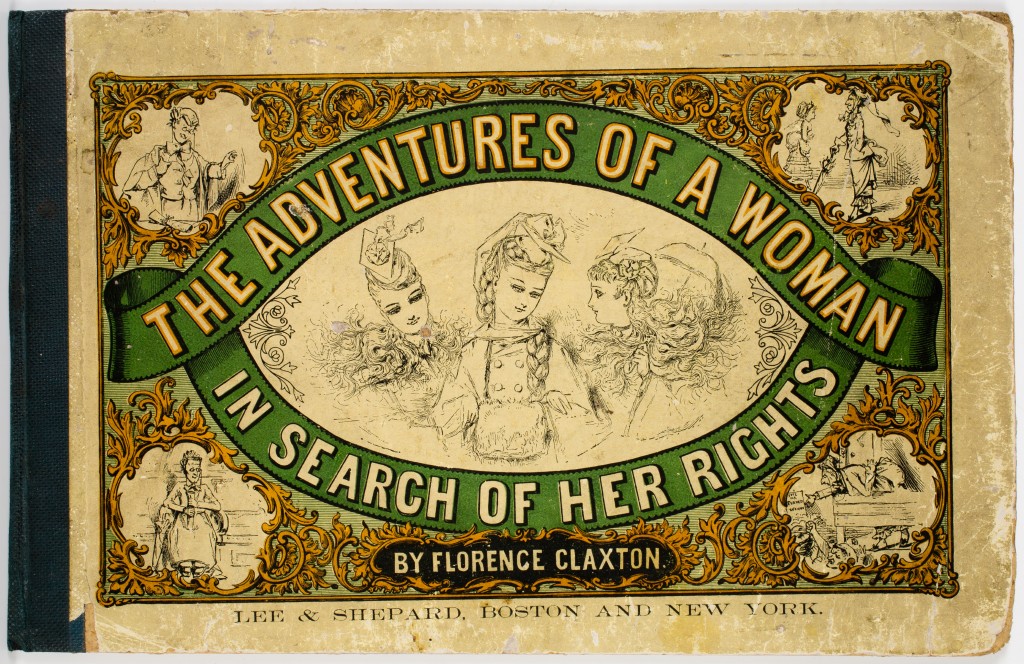 Florence Claxton, The Adventures of a Woman in Search of Her Rights, containing nearly one hundred original drawings by the author, which have been reproduced in fac-simile by the graphotype process of engraving. Boston and NY: Lee & Shepard, 187-?.
Florence Claxton, The Adventures of a Woman in Search of Her Rights, containing nearly one hundred original drawings by the author, which have been reproduced in fac-simile by the graphotype process of engraving. Boston and NY: Lee & Shepard, 187-?.
The title suggests an adventure novel, a coming-of-age story, and a sentimental novel rolled into one. The Adventures of a Woman in Search of Her Rights is all of the above, but it is also a comic novel drawn and written by English artist and illustrator Florence Claxton. Claxton was the daughter of English painter Marshall Claxton, who trained her and her sister Adelaide. Best-known for her watercolor satirizing the Pre-Rapahelites, The Choice of Paris: An Idyll (1860), she made a living as an illustrator for books and the popular press.
The copy of The Adventures of a Woman in Search of Her Rights held by the American Antiquarian Society is the American edition of the one published in England in 1870-1871, but its is more a reproduction as it includes the original ads for British goods on the back cover (see below).
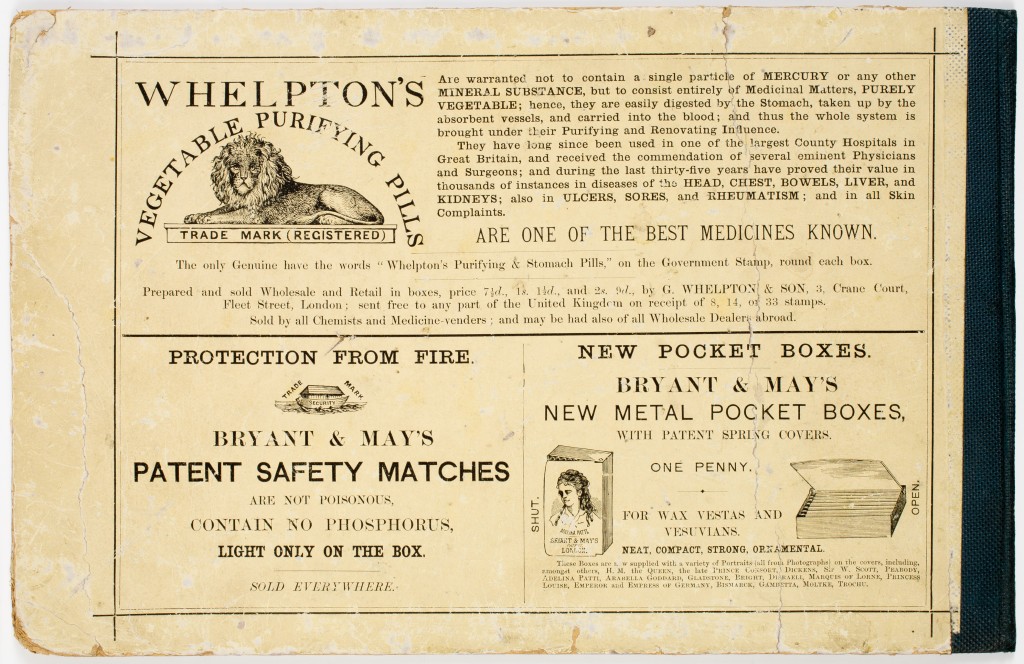 Told in a few dozen drawings, it is the incredibly fast-paced story of a young woman, who, after being spurned by her lover, studies at Oxford and embraces different professions and causes, from woman suffrage and law, to politics, medicine, and spiritualism – in that order. In the end, disappointed with her countrymen (and women) she moves to the United States, where she marries Mormon leader Brigham Young. In an unexpected twist, the last drawing shows our young heroine waking up from what has been a dream and crying out, “THANK GOODNESS, IT’S ONLY A MIDSUMMER NIGHT’S DREAM – and I’m NOT emancipated.”
Told in a few dozen drawings, it is the incredibly fast-paced story of a young woman, who, after being spurned by her lover, studies at Oxford and embraces different professions and causes, from woman suffrage and law, to politics, medicine, and spiritualism – in that order. In the end, disappointed with her countrymen (and women) she moves to the United States, where she marries Mormon leader Brigham Young. In an unexpected twist, the last drawing shows our young heroine waking up from what has been a dream and crying out, “THANK GOODNESS, IT’S ONLY A MIDSUMMER NIGHT’S DREAM – and I’m NOT emancipated.”
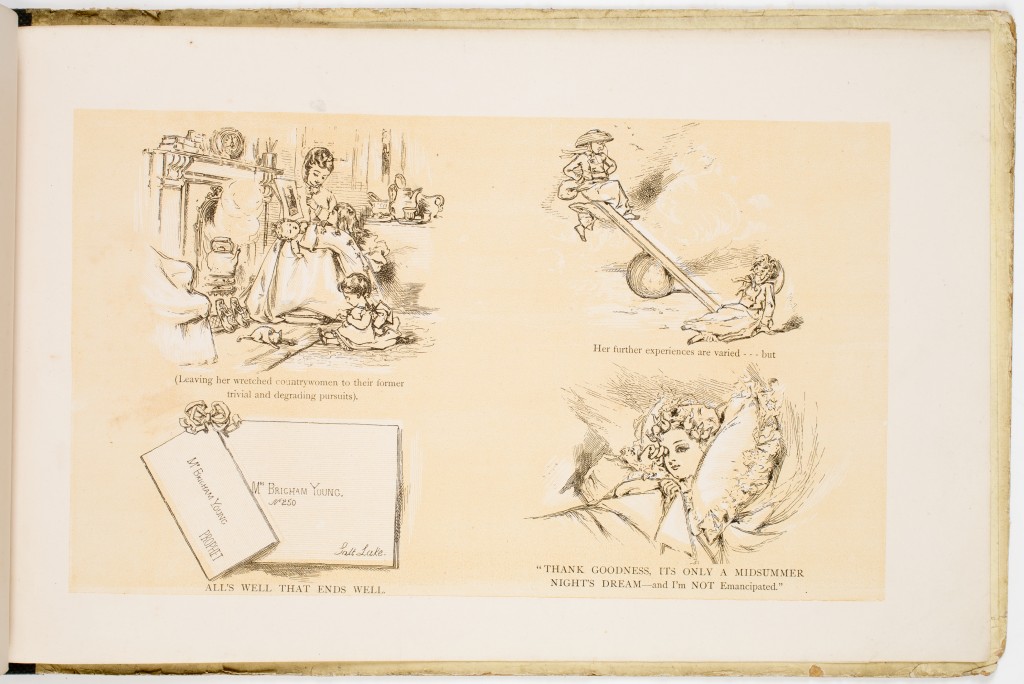 The targets of Claxton’s wit are numerous in this book, but it is the woman suffrage movement, still in its infancy in England in the early 1870s, that she particularly derides, relying on the many clichés of antisuffragist rhetoric at the time. She points to the flaws of suffragism as a middle-class women’s movement ignorant of the plight of working-class women and mothers.
The targets of Claxton’s wit are numerous in this book, but it is the woman suffrage movement, still in its infancy in England in the early 1870s, that she particularly derides, relying on the many clichés of antisuffragist rhetoric at the time. She points to the flaws of suffragism as a middle-class women’s movement ignorant of the plight of working-class women and mothers.
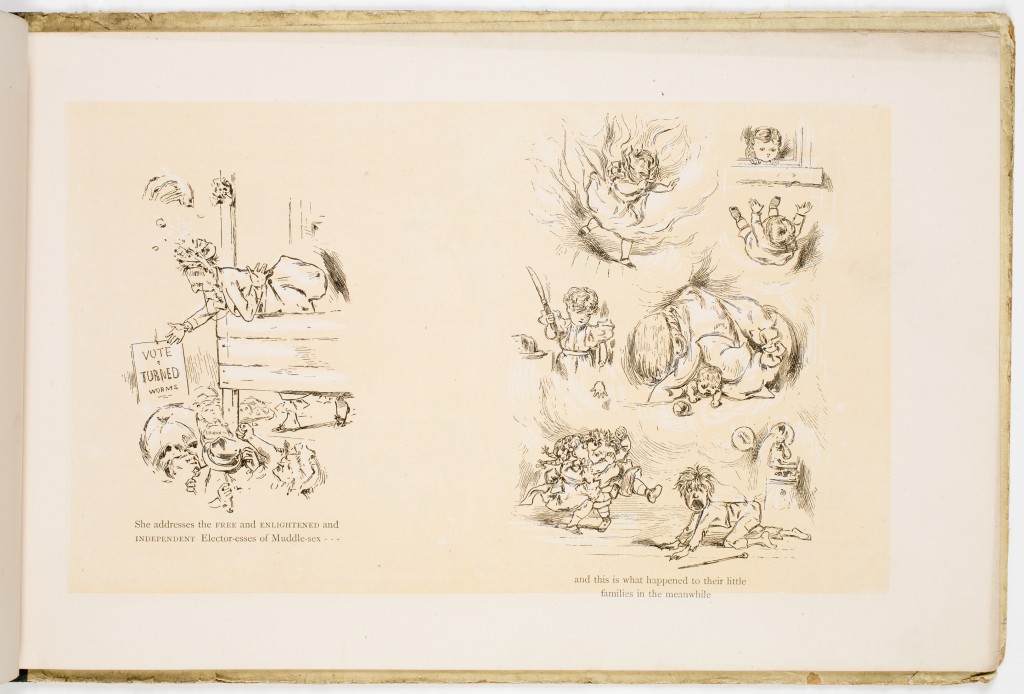 The fact that the heroine’s adventures start in unrequited love and end with a marriage to polygamist Brigham Young suggests rather heavily that it is frustration and the impossibility to form a relationship with a man that account for her commitment to women’s rights. Similarly, when she becomes a suffragist after reading John Stuart Mill – an early supporter of woman suffrage during the debates of the 1867 Reform Act – she undergoes several physical transformations: her nose “assumes strong-minded proportions,” she decides to give up her feminine attire to dress and act like a man.
The fact that the heroine’s adventures start in unrequited love and end with a marriage to polygamist Brigham Young suggests rather heavily that it is frustration and the impossibility to form a relationship with a man that account for her commitment to women’s rights. Similarly, when she becomes a suffragist after reading John Stuart Mill – an early supporter of woman suffrage during the debates of the 1867 Reform Act – she undergoes several physical transformations: her nose “assumes strong-minded proportions,” she decides to give up her feminine attire to dress and act like a man.
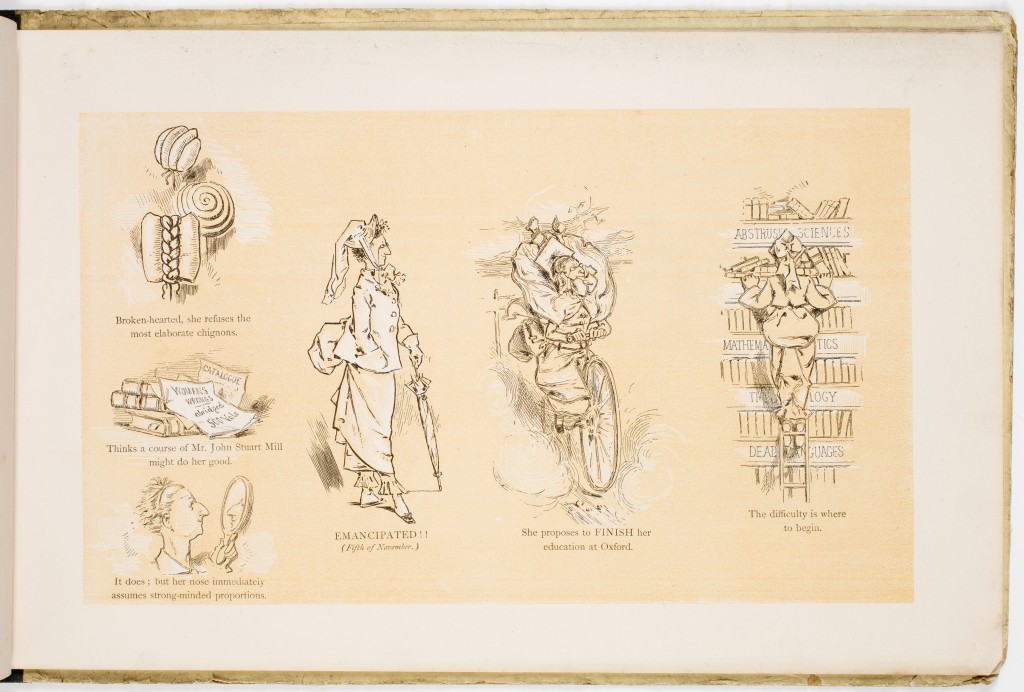 The Adventures of a Woman in Search of Her Rights, however, should not be mistaken for Claxton’s ideas on women’s emancipation. At least two of her works show her concern about women’s condition: Scenes from the Life of a Female Artist (exhibited at the 1858 annual show of the Society of Women Artists), and Woman’s Work, a Medley (1861). In 1859, she signed a petition for the admission of women to the Royal Academy Schools. Despite the constraints of her job as a cartoonist, which required her to make fun of the fads of her time, we can also see the extent to which her comic novel resonated with her own rather adventurous and uncommon life – as a female cartoonist, but also as a woman who lived in Australia, India, and Egypt as a teenager and young adult.
The Adventures of a Woman in Search of Her Rights, however, should not be mistaken for Claxton’s ideas on women’s emancipation. At least two of her works show her concern about women’s condition: Scenes from the Life of a Female Artist (exhibited at the 1858 annual show of the Society of Women Artists), and Woman’s Work, a Medley (1861). In 1859, she signed a petition for the admission of women to the Royal Academy Schools. Despite the constraints of her job as a cartoonist, which required her to make fun of the fads of her time, we can also see the extent to which her comic novel resonated with her own rather adventurous and uncommon life – as a female cartoonist, but also as a woman who lived in Australia, India, and Egypt as a teenager and young adult.
